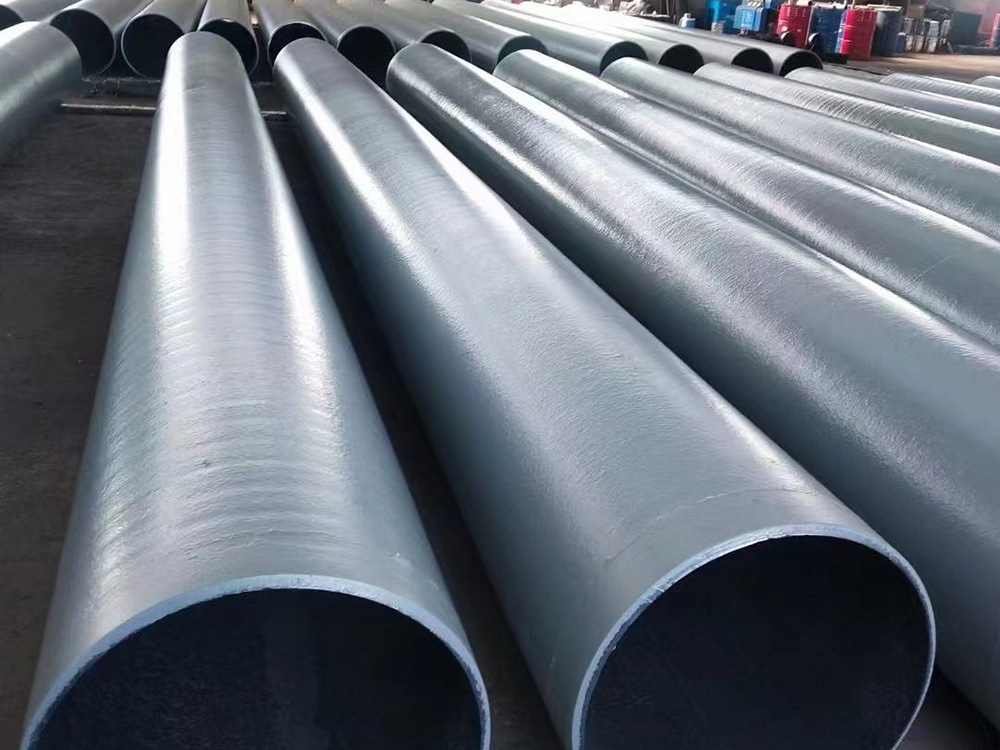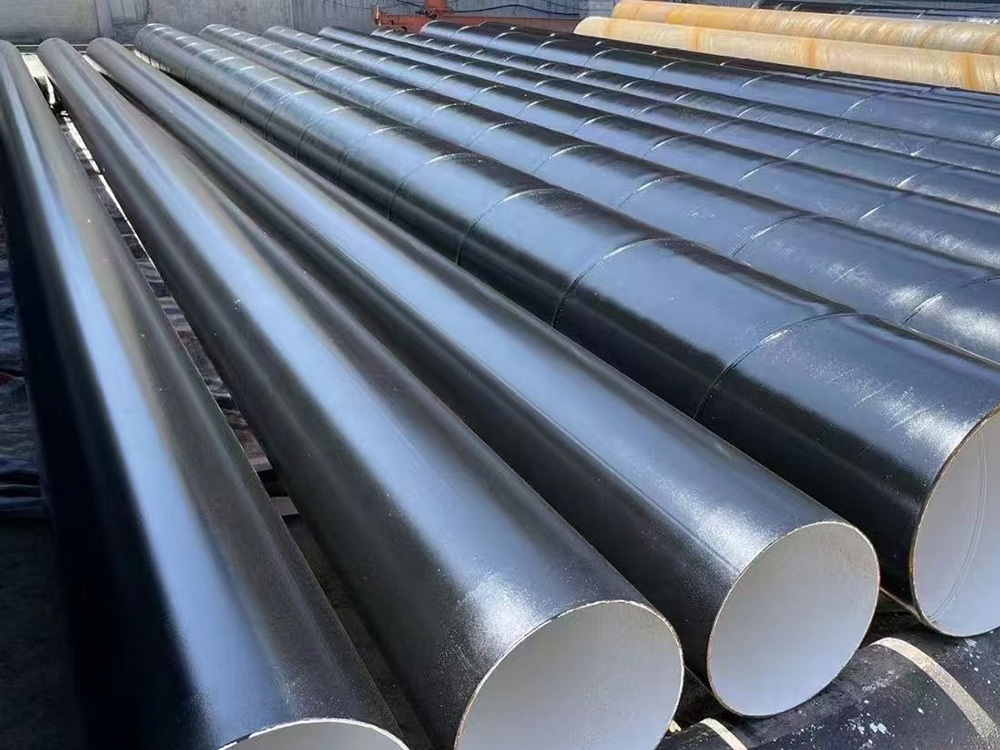Choosing the Right Coating: The Case for 3PE in Underground Steel Pipes
2025-04-22

Choosing the Right Coating: The Case for 3PE in Underground Steel Pipes
When it comes to underground steel pipes, the coating you choose can significantly impact durability, maintenance, and overall performance. Among the various options available, **3PE (Three-Layer Polyethylene)** has emerged as a leading choice for professionals in the construction and infrastructure sectors. This article delves into the advantages of using 3PE coatings, their application processes, and why they are essential in protecting steel pipes from corrosion and other environmental hazards.
Table of Contents
- Understanding 3PE Coatings
- Benefits of 3PE Coatings for Underground Steel Pipes
- Application Process of 3PE Coatings
- Comparison with Other Coating Options
- Maintenance and Care for 3PE-Coated Pipes
- Environmental Impacts of 3PE Coatings
- Case Studies and Real-World Implementations
- Frequently Asked Questions
- Conclusion
Understanding 3PE Coatings
3PE coatings consist of three distinct layers designed to provide superior protection against corrosion and physical damage. The layers include:
1. **Inner Layer**: This is a fusion-bonded epoxy layer that provides excellent adhesion and corrosion resistance to the steel surface. It acts as the first line of defense against moisture and chemicals.
2. **Middle Layer**: The second layer is typically made of adhesive materials that enhance the bond between the epoxy and polyethylene layers, ensuring a solid and durable coating.
3. **Outer Layer**: The outermost layer is high-density polyethylene (HDPE), which provides additional protection against mechanical damage and environmental factors.
This multi-layered approach not only increases the lifespan of underground steel pipes but also minimizes maintenance costs associated with corrosion and repair.
Benefits of 3PE Coatings for Underground Steel Pipes
The choice of 3PE coatings offers numerous benefits, making it a preferred option for many projects:
1. Exceptional Corrosion Resistance
One of the primary reasons for choosing 3PE coatings is their exceptional resistance to corrosion. Underground steel pipes are often exposed to harsh conditions, including moisture, soil chemicals, and fluctuating temperatures. The epoxy layer acts as a robust barrier, preventing corrosive elements from reaching the steel.
2. Enhanced Mechanical Protection
The high-density polyethylene outer layer provides significant protection against physical damage from soil movements, impact, and abrasion. This is especially valuable for pipes installed in areas with high traffic or heavy equipment activity.
3. Long Lifespan
When installed correctly, 3PE-coated pipes can last for decades without requiring significant maintenance. This longevity not only reduces replacement costs but also minimizes disruptions to the surrounding environment and infrastructure.
4. Cost-Effectiveness
While the initial investment in 3PE coatings may be higher than other options, the long-term savings associated with reduced maintenance, repairs, and replacements make it a cost-effective choice overall.
5. Environmentally Friendly Options
Many manufacturers of 3PE coatings offer eco-friendly solutions that help minimize the environmental impact. These coatings are often free from harmful solvents and chemicals, making them a responsible choice for environmentally-conscious projects.
Application Process of 3PE Coatings
Understanding the application process for 3PE coatings is crucial to ensure optimal performance. The steps typically include:
1. Surface Preparation
Before applying the 3PE coating, the surface of the steel pipe must be thoroughly cleaned and prepared. This involves removing any rust, dirt, or contaminants that could affect adhesion. Common methods include abrasive blasting and power washing.
2. Epoxy Application
Once the surface is prepared, the fusion-bonded epoxy layer is applied. This layer is typically heated and then sprayed onto the pipe, ensuring a uniform coating. The epoxy must be allowed to cure properly for maximum adhesion.
3. Adhesive Layer Application
After the epoxy has cured, the adhesive layer is applied. This layer enhances the bond between the epoxy and the outer polyethylene layer.
4. Outer Layer Application
The final step involves applying the high-density polyethylene layer. This can be done through either extrusion or wrapping processes, depending on the manufacturer's specifications.
5. Quality Control and Testing
After application, the coated pipes undergo rigorous quality control checks to ensure that the coating meets industry standards. Tests may include adhesion tests, thickness measurements, and visual inspections.
Comparison with Other Coating Options
While there are several coating options available for steel pipes, 3PE stands out for several reasons:
1. Comparison with 2PE Coatings
Two-layer polyethylene coatings (2PE) lack the corrosion resistance offered by the epoxy layer found in 3PE coatings. While 2PE coatings may be suitable for less demanding applications, they do not provide the same level of protection, making 3PE a superior choice for underground installations.
2. Comparison with Coal Tar Epoxy
Coal tar epoxy coatings have been used historically, but they have several drawbacks, including higher environmental impact and more complex application processes. 3PE coatings, being solvent-free, present a cleaner and more efficient alternative.
3. Comparison with Polyurethane Coatings
Polyurethane coatings offer some flexibility and abrasion resistance but fall short in terms of long-term corrosion protection. In contrast, 3PE coatings provide a more robust solution for underground applications.
Maintenance and Care for 3PE-Coated Pipes
Although 3PE coatings are designed for durability, regular maintenance can help ensure their longevity. Here are some best practices:
1. Routine Inspections
Conducting periodic inspections can help identify any signs of damage or wear. Look for areas where the coating may have been compromised or where rust may be forming.
2. Cleaning
Keep the area around the pipes free from debris and vegetation that could potentially damage the coating. Regular cleaning helps maintain the integrity of the coating.
3. Immediate Repairs
If any damage is detected, address it immediately to prevent further deterioration. Repairs may involve reapplying the coating or addressing the underlying issue.
Environmental Impacts of 3PE Coatings
Choosing environmentally friendly materials is increasingly important in construction and infrastructure. 3PE coatings offer several advantages in this regard:
1. Reduced Chemical Leaching
The use of eco-friendly materials in 3PE coatings minimizes the risk of harmful chemicals leaching into the soil and water systems, making them a safer choice for underground applications.
2. Sustainable Manufacturing Processes
Many manufacturers of 3PE coatings are committed to sustainable practices in their production processes, ensuring that the environmental footprint is minimized throughout the lifecycle of the product.
3. Energy Efficiency
The durability and longevity of 3PE coatings contribute to overall energy efficiency in infrastructure projects, reducing the need for frequent replacements and the associated environmental impacts of manufacturing new materials.
Case Studies and Real-World Implementations
To understand the practical application of 3PE coatings, consider the following case studies:
1. Urban Infrastructure Projects
In several urban infrastructure projects, 3PE-coated pipes have been employed to ensure long-lasting performance in challenging environments. The success of these projects demonstrates the effectiveness of 3PE coatings in reducing maintenance costs and prolonging the lifespan of essential services.
2. Oil and Gas Industry
The oil and gas sector has embraced 3PE coatings for their pipelines due to their resistance to corrosive substances and harsh environmental conditions. Case studies reveal significant reductions in corrosion-related incidents, leading to safer operations.
3. Water Supply Systems
In municipal water supply systems, the use of 3PE-coated pipes has contributed to improved water quality and reduced maintenance needs. The long-term benefits of using 3PE in these applications highlight its value in critical infrastructure.
Frequently Asked Questions
1. What is the lifespan of 3PE-coated pipes?
3PE-coated pipes can last upwards of 50 years with proper installation and maintenance, making them an excellent long-term investment.
2. Are 3PE coatings suitable for all environments?
Yes, 3PE coatings are designed to perform well in various environments, including wet, dry, and chemically aggressive settings.
3. How do I ensure proper application of 3PE coatings?
Ensure that trained professionals conduct the surface preparation and application processes to achieve optimal performance.
4. Can 3PE coatings be repaired if damaged?
Yes, damaged areas can be repaired by reapplying the coating after addressing any underlying issues.
5. What are the environmental benefits of using 3PE coatings?
3PE coatings reduce chemical leaching, promote sustainable manufacturing practices, and contribute to energy efficiency in infrastructure projects.
Conclusion
In conclusion, the selection of an appropriate coating for underground steel pipes is crucial for ensuring their longevity and performance. **3PE coatings** stand out as a premier choice, offering unparalleled protection against corrosion, mechanical damage, and environmental factors. The multi-layer design, combined with eco-friendly manufacturing practices, positions 3PE as a reliable and sustainable option for various applications. By understanding the benefits, application processes, and maintenance considerations outlined in this article, you can make an informed decision that will lead to lasting success in your construction and infrastructure projects.
Blog
Innovative Applications of 3PE Anti-Corrosion Steel Pipes in Construction
Innovative Applications of 3PE Anti-Corrosion Steel Pipes in Construction
Table of Contents
1. Introduction to 3PE Anti-Corrosion Steel Pipes
2. Key Benefits of 3PE Technology in Construction
3. Diverse Applications of 3PE Anti-Corrosion Steel Pipes
4. Installation Techniques for 3PE Steel Pipes
5. Sustainability and Environmental Impact
6. Compliance with Industry Sta








